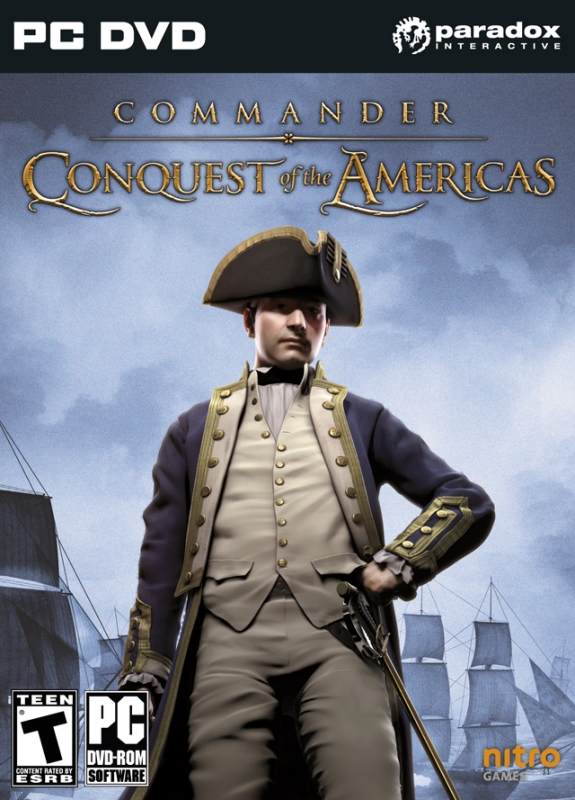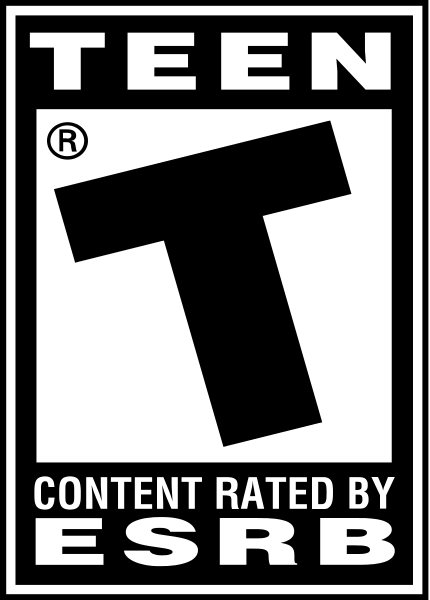Existing User Log In
New User Registration
Register for a free account to gain full access to the VGChartz Network and join our thriving community.





America - Front


America - Back



Nitro Games
Strategy
 07/30/10 Paradox Interactive
07/30/10 Paradox Interactive  (Add Date)
(Add Date) 07/30/10 Paradox Interactive
07/30/10 Paradox Interactive
| Owners: | 2 | |
| Favorite: | 0 | |
| Tracked: | 0 | |
| Wishlist: | 0 | |
| Now Playing: | 0 | |
The golden age of sail, that much romanticized period of history when Western adventurers in search of spices and gold set out to explore the outer reaches of the known world. It was an age when the European powers for the first time started vying for control of the high seas on a global scale. Many movies, documentaries, board games and videogames have been devoted to this exciting period of history. Most of them have focused on the military aspect of the age, using only simplified economic structures as accessories towards fuelling the military machinery which invariably took center stage.
However, the reality of the age was the other way around. The reason why the European powers of the period even bothered to invest in armies and navies was because they were essential to protecting vulnerable commercial interests. Nitro’s ‘Commander’ series tries to reflect this reality, correcting the approach of previous titles by making trade the focal point of gameplay and using the military as a simple safeguard.
Set in the early 1600s, Commander: Conquest of the Americas is Nitro’s second stab at this trade-centrist approach. The original title, Commander: East India Company, although well received overall, was criticized for being a little shallow and repetitive. Nitro eagerly and good naturedly accepted these criticisms and have now delivered a much deeper and more rounded game; still a little slow in the action department, but with plenty of intricacies to keep you busy and entertained most of the time.
You start out with a small fleet in the middle of the Atlantic and your first mission is to found and solidify your first American colony in one of the many appropriate spots marked on a map of the Americas. Then you must look to expand the colony and add new ones while ensuring a healthy trade flow between the New World and your home port. Eventually, you’ll run out of empty colony spots for expansion and will have to fight other powers to conquer theirs.
In order to fulfill this grand scheme, you are somewhat aided by a team of four advisors who set missions, objectives, and offer occasional counsel on ways to make your colony grow. You are not forced to follow on all the demands they constantly pour on your shoulders, but you must be careful to never completely ignore them either, because if their evaluation of your administration goes too low you will end up losing your post as viceroy in the Americas. Fortunately, their goals, and yours generally, will run along the same lines, and pleasing them often only demands minor adjustments to an average player’s natural timeline.
As hinted earlier, the true core of the game is centered on trade. You usually begin with decent enough start-up budgets, but from then on you depend almost entirely on your ability to trade profitably in order to keep the game going. This implies keeping a constant circulation of trade boats moving goods between the Americas and Europe. This isn’t always a simple task, since there are many factors that affect the returns you obtain from your colonies. Among these factors one can single out immigration, the type of trade goods, and the safety of the trade lanes as the most important.
Larger colonies are more profitable than smaller ones, so one of your primary early goals is to expand the population base in each outpost under your banner. Population growth in the game is fuelled mainly by immigration from the home port, and you should always allot the lion’s share of cargo space in any vessel bound for the Americas to the transport of immigrants. The amount of immigrants available for transport is dependent on the attractiveness of your colonies. A well kept and safe colony with good infrastructure will mean a constant supply of immigrants at home waiting for transport. As the colonies grow, they become more productive, diversify, and offer you new types of goods to trade. Be aware, however, that larger colonies also require more upkeep and become more attractive targets for foreign invasion and piracy.
The second aspect to keep in mind is the type of goods traded. As in real life, processed goods bring in far more cash than raw materials, and it is very advisable to build an industrial infrastructure in the Americas as early as possible. In my first try out with the game I made the mistake of trying to keep the colony going by trading on raw spices alone and the end result was that as the colony grew and became more expensive to maintain, the spice trade simply wasn’t able to sustain it and it went broke. Since you can trade between your own colonies as well, you don’t necessarily have to build a full manufacturing infrastructure in each colony, and can instead focus most buildings on a single major urban center while keeping the other colonies as mere sources of raw materials. This would also simplify defense, which takes us to the third and final point.
It is vitally important to keep your trade lanes safe in this game. After only a few turns into the campaign the whole American coastline starts filling up with pirates waiting for undefended ships to raid. You need to make sure your vessels are escorted at all times, especially if they are carrying processed goods. Actually, my second stab at the game ended unceremoniously when a huge cargo of silver jewelry in which I had invested over half my budget was ambushed and lost to pirates. The other reason for guarding your vessels is the threat of war. Once you are in a conflict with another nation all of your trading vessels become fair game and you have to invest considerable money in powerful fleets and troops to counter any enemy raids. The up-side of war in Commander: Conquest of the Americas is that you can also raid and seize the other nation’s colonies and trade ships.
Most of the game is played on the strategic map, but when a naval battle becomes imminent you are given the chance to play out the actual battle in an RTS-mode screen. These battles can be visually impressive, with beautifully detailed vessels, and potentially very large fleets. Although, as in any RTS battle, mouse control speed is the most critical element for victory, the creators did pack into the game some options that add greater tactical depth to the combat experience. For instance, depending on the situation, you can choose the type of ammunition you shell on your rivals. There is chain shot to cut down sails and immobilize the enemy, grapeshot to decimate enemy crews, and round shot to damage hulls and sink ships. Other aspects to consider during RTS battles are the speed and gun capacity of each vessel.
Nevertheless, RTS combat will only occupy a small amount of your time in most games, and can in fact be skipped altogether by allowing the computer to auto-resolve battles for you. Considering the graphic detail of these battles, you may actually find this desirable unless you own a computer with a very powerful graphics card. There are also a few minor glitches and bugs during RTS battles that may also incline you to pass on them for now, at least until a few patches are in place. If you’re to acquire this game, you should focus on the strategic game play, since it is its main selling point.
Regarding the technical aspect, the game can be considered a competitive option within its genre. The background music is limited to a single quite lengthy instrumental composition, but this background tune is excellent at setting the epic and adventurous mood needed to enjoy the game. The sound effects are limited to only a few sounds that are repeated often, but they are at least credible reproductions of the actions they represent and help to create the proper atmosphere for the game. The voice acting is flat, and it was one of my greatest disappointments (for instance, you hear the exact same British sounding voice when you issue a naval order, no matter whether your captain is Spanish or French). The game engine is decent enough, and although it won’t push the borders of game A.I.s it will at least keep things challenging and sufficiently interesting for you to enjoy the single campaign available. The graphics style is beautiful and fits wonderfully with the other elements of gameplay.
There are a few things that may irk most first time players of Commander: Conquest of the Americas. First and foremost, there's no tutorial at the beginning of the game. Perhaps the creators assumed the occasional herding services offered by the advisors sufficed to help you through those critical early rounds, but they really don’t. You will crash, and very badly, on your first few attempts at the game. It takes a few of these failed runs before you finally get it right and begin to cruise. The RTS naval battles do speed up the game’s tempo, but even then the change in pace is only relative; after all we are talking about vessels that moved at the speed of a breeze. Also, there is the annoying fact that colonies can only be established on the coastline, leaving the whole inland territories as a permanent ‘Terra Incognita’. Although the game offers you seven nations from which to choose to create your empire, in practice the differences between these factions is minimal and your choice of country will have little effect on how your campaign develops. Finally, there is the lack of multi-player; the game is strictly a solitary experience, which is a true shame, because it would have been interesting to try your wits against friends in a race for profits in the early colonial theaters of the Americas.
However, the general balance after all is said and done is on the favorable side for this title. Commander: Conquest of the Americas is not at all a fast game; it’s a very cerebral and laid back experience, but oddly rewarding once you get the feel of it. There is sober sense of satisfaction in seeing your flags slowly popping all over the New World’s coastline, because you know each flag took quite a bit of effort to plant. There is also the exhilaration of being able to trample the competitor nations out of the Atlantic sea lanes. Of course, if you are all about the adrenalin rush and fast paced action, stay away from this title because it’s not meant for you. But if you have the time, patience and mindset to find out if you could have made it in the Age of Sail, then you will enjoy Commander: Conquest of the Americas.










| Total Sales |
0.00m
Japan |
0.00m
NA |
0.02m
Europe |
0.00m
Others |
0.03m
Total |
| 1 | n/a | n/a | 128 | 32 | 160 |
| 2 | n/a | n/a | 181 | 62 | 243 |
| 3 | n/a | n/a | 176 | 60 | 236 |
| 4 | n/a | n/a | 193 | 66 | 259 |
| 5 | n/a | n/a | 195 | 66 | 261 |
| 6 | n/a | n/a | 223 | 76 | 299 |
| 7 | n/a | n/a | 323 | 111 | 434 |
| 8 | n/a | n/a | 371 | 127 | 498 |
| 9 | n/a | n/a | 476 | 162 | 638 |
| 10 | n/a | n/a | 841 | 287 | 1,128 |